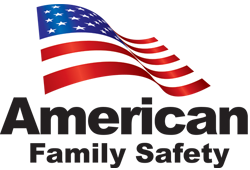No products in the cart.
Emergency Preparedness
Family Communications Plan
When making your family’s plan, please consider the following situations resulting from a severe disaster:
- It will take the Federal Emergency Response Agency (FEMA) time to bring help and order to a major disaster area. This is why it is deemed essential to have AT LEAST 72 hours of self-sufficiency as a family, so you can fend for yourselves until assistance can be rendered. This responsibility lies with you, not the government! (Think about what happened with Hurricane Katrina).
- Access to electricity, natural gas, and running water will likely not be available for anywhere from several days to over a week.
- It will not be realistic to drive your car for several days – expect roads to be blocked by debris from damaged buildings, flood waters, abandoned cars, accidents, and areas blocked off as un-safe. Bridges will be closed until authorities can verify they are safe to cross.
- When a disaster occurs, family members may be separated. It must be decided in advance what steps everyone in the family will take to get back together. This should be documented in an Emergency Family Communication plan, and everyone should have a small copy of this plan in their purse or wallet at all times.
- Communications will be difficult in the aftermath of a disaster. Please consider the following about emergency communication:
- Cellular networks will not be able to support voice calls, but *may* be capable of sending and receiving text messages. Cell phones however should not be considered a realistic form of communication after a disaster. It is essential to have an out-of-state contact person whom everyone in the family can call to check in with. You have a much better chance of getting a connection to someone far outside the disaster area than you would of calling the house next door. Use a landline to make this call. If all else fails, use a payphone and make a collect call.
- Internet and television will not function without power. The only way to receive important information about what to do (and what not to do) is by radio. You should have a very small and portable radio that uses very little power and runs on small batteries. Large stereos that plug into the wall (but can also take batteries) are not very portable, and require too much power.
- You may require rescue attention (for example if you are trapped in a structure), or you may need to attract an emergency responder to help someone else. You will lose your voice within minutes of continuous yelling. The only way to sustain a call for help is with a whistle. Your emergency Ready Kit should contain a waterproof whistle.
- Dust, debris, and materials like asbestos from damaged buildings; smoke from fires; and release of airborne toxins may contaminate the air in the area around you. Ensure everyone has an effective respirator mask to keep them healthy.
- Structural damage may make it unsafe to remain in the structure you were in when the disaster occurred – you may be forced to leave your home, office, or classroom with only seconds to react. You may also need to turn off the utilities like gas and water using a special tool to prevent severe damage to the building or your home.
- If you have products like food; water; a first aid kit; and flashlights in your home, you are to be congratulated for taking those steps toward having safety items for every-day usage. Since you clearly believe in safety, wouldn’t you like to have preparedness supplies that are kept on reserve and not used during everyday life? This way you can ensure that you will always have an adequate supply of these vital items on hand when you need them most. Please consider the following:
- It is humanly impossible to think carefully in an emergency. With only moments to spare, you either react according to instinct, or according to a plan you have trained to implement. Composing an impromptu emergency kit from items scattered throughout your home IS NOT REALISTIC – you should consider having an emergency kit which allows you to “Grab-and-Go” in seconds.
- Bottled water expires! Typically, bottled water and canned food must be replaced every year. Failure to do so will mean relying on unsafe water and food, causing you to become sick and incapacitated when no assistance will be available.
- Canned food and large water containers are heavy and not portable. Canned foods also contain large amounts of sodium (salt) which will make you thirsty, and tempt you to drink your water reserves too quickly!
- Your emergency kit will be maintenance free, and will serve you better if you equip it with US Coast Guard approved food and water rations with a long shelf-life, and special formulation to nourish and sustain your family.

